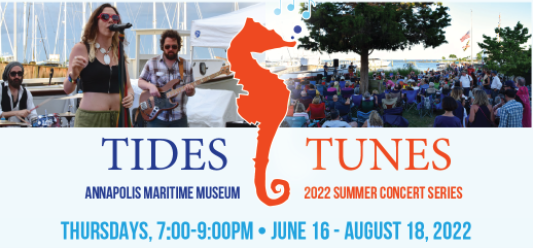 For many “It’s the Most Wonderful Time of the Year” for children not so much, the dreaded last month of summer vacation. As we enter the month of August and, prepare our precious young ones for the beginning of the school year, Annapolis Fire Chief David L. Stokes, Sr. would like to share some important safety tips for a safe return to school. Please take the time to go over each point with your child, and stress the importance of safety.
For many “It’s the Most Wonderful Time of the Year” for children not so much, the dreaded last month of summer vacation. As we enter the month of August and, prepare our precious young ones for the beginning of the school year, Annapolis Fire Chief David L. Stokes, Sr. would like to share some important safety tips for a safe return to school. Please take the time to go over each point with your child, and stress the importance of safety. Walking to school
Waking to and from school can be fun and exciting, especially do so with friends when walking keep these points in mind:
- Always have a responsible adult with you. If an adult is unable to walk with you walk with a group of your peers.
- Always walk on the sidewalk if one is available. If no sidewalk is available, walk facing traffic.
- The safest place to cross the street is at a corner or intersection.
- If you are 10-year-old or younger always cross with an adult.
- Before you step off the curb to cross the street, STOP and LOOK ALL WAYS to see if cars are coming.
- Walk, do not run. This gives driver’s time to see you before you enter the roadway. Running also makes you more likely to fall in the street.
- Do not run out in front of a parked car. The drivers on the road may not see you and hit you.
Riding Your Bike to school?
- Always wear a helmet that fits correctly. The helmet should fit low on your forehead so that two fingers fit between it and your eyebrows. Another way to check is to put the helmet on your head and look up. If you can’t see your helmet, it is too far back.
- To ride safely, you need to know the rules of the road. If you don’t, then you should not ride without an adult.
- Ride on the right side of the road, trail, or sidewalk in a single file line in the same direction as other vehicles. Before crossing the street, come to a complete stop, dismount your bike and walk it across the street. Never ride your bike across the street.
- Wait for a driver’s signal before crossing the street.
- Always wear bright and visible colors.
- Riding at night can be dangerous. If you must ride at night, you should ride with an adult. You should have a white light on the front of your bicycle and a red reflector on the back. You can also get lights and reflective materials to put on your shoes, helmet, and clothing.
- Practice makes perfect. The more skilled you are at riding, the less likely you are to crash. Practice your riding skills in an empty parking lot or a place with no traffic. Practice such things as riding in a straight line, looking over your shoulder, signaling with your hands, and starting and stopping.
Riding the Bus?
Boarding the School Bus
- When the bus arrives, stand at least three giant steps (6 feet) away from the curb.
- If you must cross the street in front of the bus, walk on the sidewalk until you are at least five giant steps (10 feet) ahead of the bus then cross.
- Be sure the bus driver can see you and you can see the bus driver.
- Never walk behind the bus.
- If you drop something near the bus, tell the bus driver. Never try to pick it up first because the driver may not be able to see you.
- Behavior on the School Bus
- When on the bus, find a seat and sit down. Loud talking or noise can take the bus driver’s attention away from the road and cause an accident. Keep in mind this is not allowed.
- Keep hands, feet, and other body parts inside the ride at all times.
- Keep aisles clear—books or bags are a tripping hazards and can block the way in an emergency.
- Before you reach your stop, get ready to leave by gathering all of your belongings together.
- Wait for the bus to come to a complete stop before getting up from your seat, walk to the front door and exit, using the handrail.
Getting off the School Bus
- If you must cross the street in front of the bus, walk at least ten feet ahead of the bus along the side of the road until you can turn around see the driver.
- Make sure the bus driver can see you.
- Wait for a signal from the driver before beginning to cross.
- When the driver signals, walk across the road keeping an eye out for traffic.
- Do not cross the center line of the road until the bus driver or crossing guard has signaled that it is safe for you to begin walking.
- Stay away from the wheels of the bus always. We all know they go (round and round).
Safety Tips for Motorists
Sharing the Road Safely with School Buses
The reality of school bus safety is that more children are hurt outside the bus than inside as passengers. Most of the children who lose their lives in bus-related crashes are pedestrians four to seven years old, who are hit by the bus or by motorists illegally passing a stopped school bus. For this reason, it is necessary to know the proper laws and procedures for sharing the road safely with school buses:
- In all 50 States it is illegal to pass a school bus that is stopped to load or unload children.
- School buses use yellow flashing lights to alert motorists that they are preparing to stop to load or unload children. Red flashing lights and an extended stop sign arm signals to motorists that the bus is stopped, and children are getting on or off the bus.
- In all 50 states, traffic is required to stop in both directions when students are entering or exiting a school bus.
- While state laws vary on what is required on a divided roadway, in all cases, traffic behind the school bus (traveling in the same direction) must stop. In Maryland, vehicles must stop for school buses when the buses’ red flashers are on, except when the buses are on the opposite side of a highway divided by a barrier or median strip.
- The area 10 feet around a school bus is where children are in the most danger of being hit. Stop your car far enough from the bus to allow children the necessary space to safely enter and exit the bus.
- Be alert. Children are unpredictable. Children walking to or from their bus are usually very comfortable with their surroundings. This makes them more likely to take risks, ignore hazards or fail to look both ways when crossing the street.
- Never pass a school bus on the right. It is illegal.
Sharing the Road Safely with Child Pedestrians
All drivers need to recognize the special safety needs of pedestrians, especially those that are children. Young, elderly, disabled and intoxicated pedestrians are the most frequent victims in auto-pedestrian collisions. Generally, pedestrians have the right-of-way at all intersections; however, regardless of the rules of the road or right-of-way, you as a driver are obligated to exercise great care and extreme caution to avoid hitting a pedestrian.
- Drivers should not block the crosswalk when stopped at a red light or waiting to make a turn. Do not stop with a portion of your vehicle over the crosswalk. Blocking the crosswalk forces pedestrians to go around your vehicle and puts them in a dangerous situation.
- In a school zone when a warning flasher or flashers are blinking, you must stop to yield the right-of-way to a pedestrian crossing the roadway within a marked crosswalk or at an intersection with no marked crosswalk.
- Always stop when directed to do so by a school patrol sign, school patrol officer or designated crossing guard.
- Children are the least predictable pedestrians and the most difficult to see. Take extra care to look out for children not only in school zones, but also in residential areas, playgrounds and parks.
- Do not honk your horn, rev your engine or do anything to rush or scare a pedestrian in front of your car, even if you have the legal right-of-way.
Sharing the Road Safely with Child Bicyclists
On most roadways, bicyclists have the same rights and responsibilities as other roadway users and often share the same lane, but bicycles can be hard to see. The riders are exposed and easily injured in a collision. Oncoming bicycle traffic is often overlooked, and its speed misjudged. Children riding bicycles create special problems for drivers because they are not capable of proper judgment in determining traffic conditions.
- When passing a bicyclist proceeding in the same direction, do so slowly and leave at least a distance between you and the bicycle of no less than 3 feet. Maintain this clearance until you have safely passed the bicycle.
- The most common causes of collisions are drivers turning left in front of an oncoming bicycle or turning right, across the path of the bicycle.
- When your vehicle is turning left and there is a bicyclist entering the intersection from the opposite direction, you should wait for the bicyclist to pass before making the turn.
- If your vehicle is turning right and a bicyclist is approaching on the right, let the bicyclist go through the intersection first before making a right turn. Remember to always use your turn signals.
- Watch for bicycle riders turning in front of you without looking or signaling, especially if the rider is a child.
- Take extra precautions in school zones and neighborhood areas where children and teenagers might be riding.
- Watch out for bikes coming out of driveways or from behind parked cars or other obstructions.
- Check side mirrors for bicyclists before opening the door. Some communities may fine drivers for collisions caused by opening a vehicle door in the path of a bicyclist.
Again, please take the time to review these safety tips with your family and enjoy the rest of your summer. If you have any further questions regarding Back to School Safety, please feel free to contact the Annapolis Fire Department at 410-263-7975 or visit our website at www.annapolis.gov. You can also visit the National Safety Council for more safety tips at www.nsc.org.











































